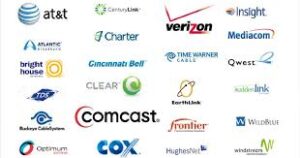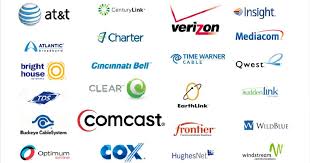
Internet service providers (ISPs) can be tricky to navigate, especially for older adults who may not be familiar with the terminology or technology. Understanding the difference between internet speeds and knowing how to negotiate can help you avoid overpaying for services you don’t need. Additionally, being aware of how ISPs operate can empower you to advocate for better deals and avoid being taken advantage of.
Let’s start by comparing two common internet speeds: 100 megabits per second (mbps) and 300 mbps. A speed of 100 mbps is more than sufficient for everyday internet use, such as browsing the web, checking email, and even streaming videos in high definition. On the other hand, a speed of 300 mbps is considered high-speed internet and is more suitable for activities like streaming 4K videos, online gaming, and downloading large files.
To put it into perspective, streaming a high-definition video on services like Netflix or Hulu requires a speed of around 5 mbps. Streaming a 4K video, on the other hand, requires a speed of around 25 mbps. Similarly, online gaming requires a stable internet connection with low latency, but the actual speed needed depends on the game and the platform.
For seniors with limited computer skills, a speed of 100 mbps is more than enough to meet their needs. Everyday internet activities like browsing the web, checking email, and video calling don’t require high-speed internet and can be done comfortably with a 100 mbps connection.
At Bridge LA, we have helped many older adults reduce their internet bills by renegotiating their service plans. One such example is a student at the Inglewood Senior Center who struggled for years to negotiate her internet bill. With our assistance, she was able to reduce her bill from $92 per month to just $29.99 per month. This example illustrates how ISPs can be sneaky in their dealings with consumers, often locking them into packages that might not suit their needs but end up costing them more.
It’s also important to note that low-income neighborhoods are often charged higher rates for internet services compared to affluent areas. This practice, known as digital redlining, exacerbates the digital divide and limits access to affordable internet services for those who need it most. In addition, useful programs such as the Affordable Connectivity Program has come to an end. Now, low-income households with be at risk of losing their affordable internet service that this program subsidized.
If you believe your internet bill is too high or if you’re not getting the service you need, don’t hesitate to seek help. Bring your internet bill to Bridge LA, and one of our digital coaches can assist you in renegotiating your bill. Remember, ISPs are not always looking out for your best interests, so it’s crucial to be informed, negotiate wisely, and advocate for yourself.

